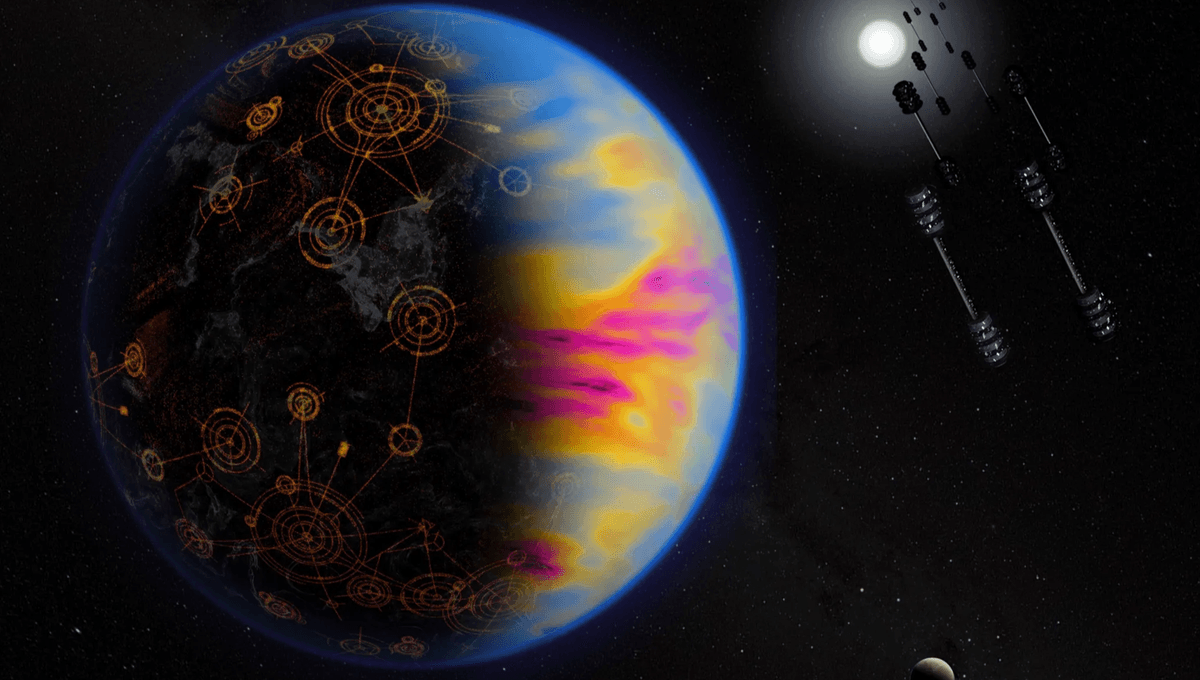
There are multiple ways astronomers aim to look for aliens. One of them is to look for evidence of advanced technology. This takes a lot of forms, but one proposal that has been suggested many times is to find evidence of vast solar panel arrays on planets or around a star. New research argues that that won’t actually be a good line of investigation.
The idea is that as a civilization grows, its energetic needs will also grow. It might require building up vast structures to absorb as much starlight as possible. Maybe it would require covering a vast area of a planet or building a Dyson sphere or Dyson swarm of spacecraft around their stars. Or would it? The new research suggests that maybe advanced civilizations are not that power-hungry.
“We found that even if our current population of about 8 billion stabilizes at 30 billion with a high standard of living, and we only use solar energy for power, we still use way less energy than that provided by all the sunlight illuminating our planet,” lead author Ravi Kopparapu of NASA’s Goddard Space Flight Center said in a statement.
To detect solar panels on a planet within 30 light-years, even with the best angle and long observation time, you need them to cover 23 percent of an Earth-like world. That would be an enormous amount of power, which is far beyond what is needed. The argument from this paper is that civilizations wouldn’t invest in such an enormous infrastructure.
“Large-scale stellar-energy harvesting structures may especially be obsolete when considering technological advances,” added Vincent Kofman, a co-author of the paper at NASA Goddard and American University, Washington, D.C. “Surely a society that can place enormous structures in space would be able to access nuclear fusion or other space-efficient methods of generating power.”
It might say something about a wider search for life in the universe. If an alien culture can survive on a fraction of its star’s output, maybe we shouldn’t expect galaxy-spanning civilizations constantly looking for the next place to expand into.
“The implication is that civilizations may not feel compelled to expand all over the galaxy because they may achieve sustainable population and energy-usage levels even if they choose a very high standard of living,” said Kopparapu. “They may expand within their own stellar system, or even within nearby star systems, but galaxy-spanning civilizations may not exist.”
Seeing the reflection of silicon solar cells might not be the way forward but there are other possible technosignatures. In particular, gases in the atmosphere.
A paper describing the results is published in The Astrophysical Journal.
Source Link: We Might Not See The Solar Panels Or Dyson Spheres Of An Alien Civilization